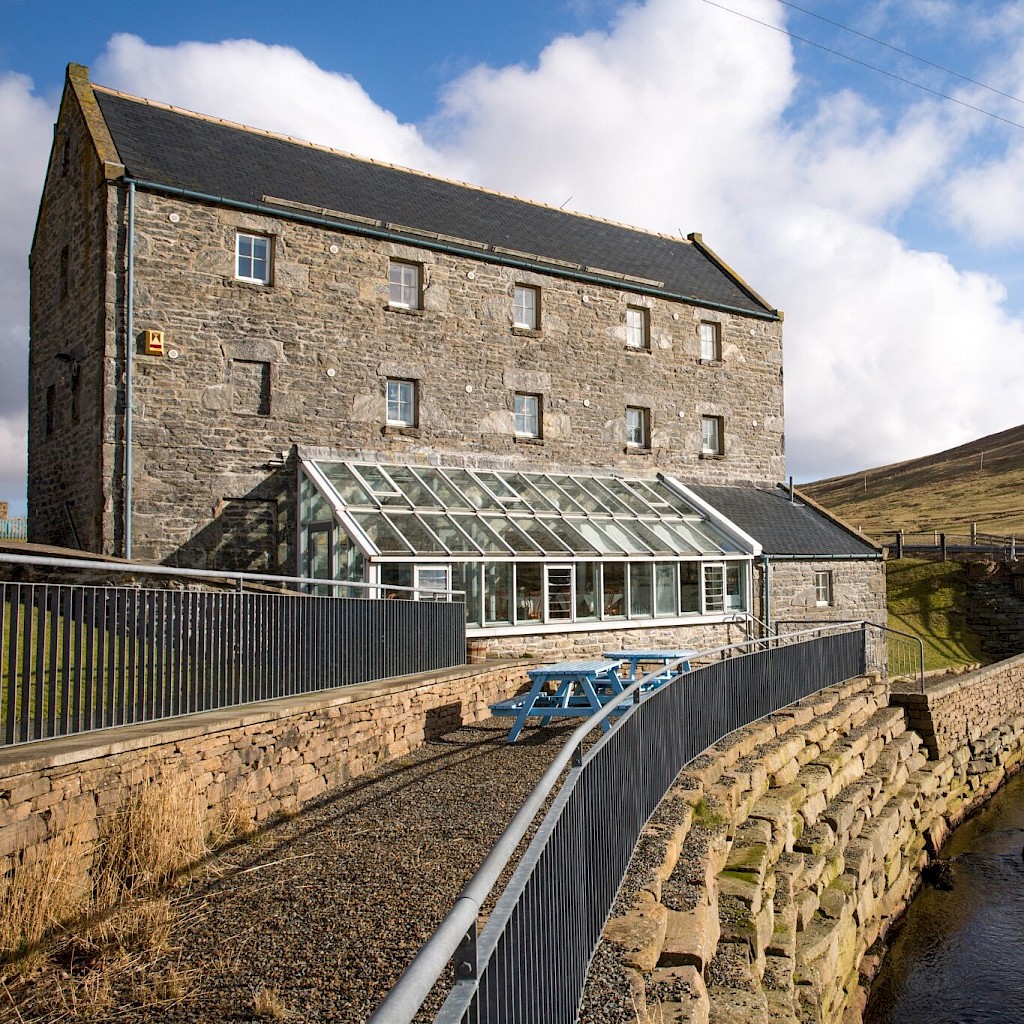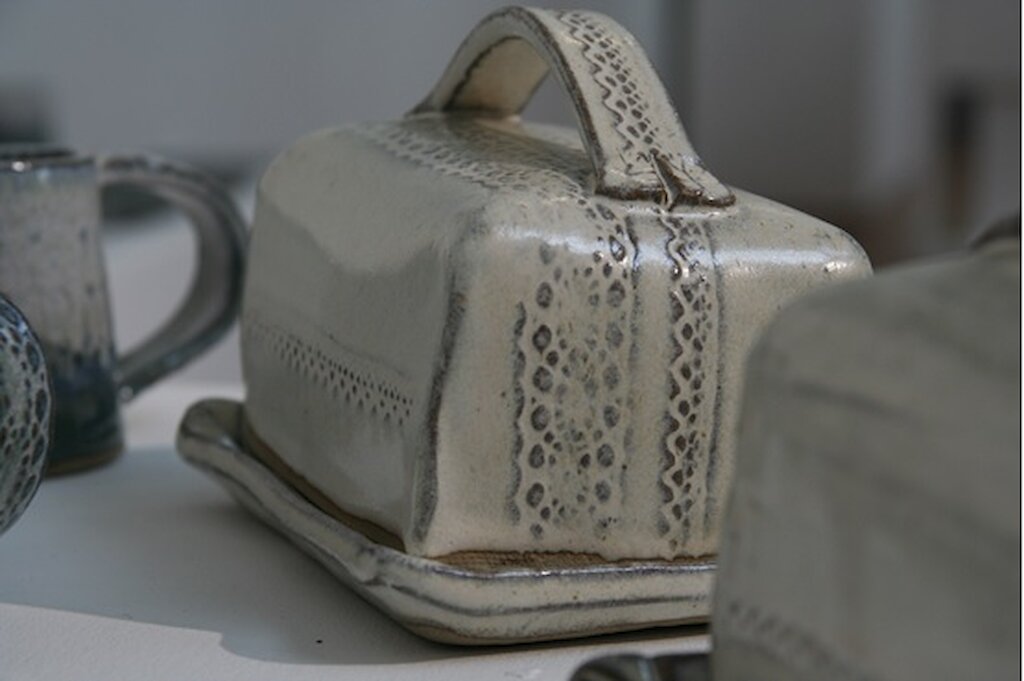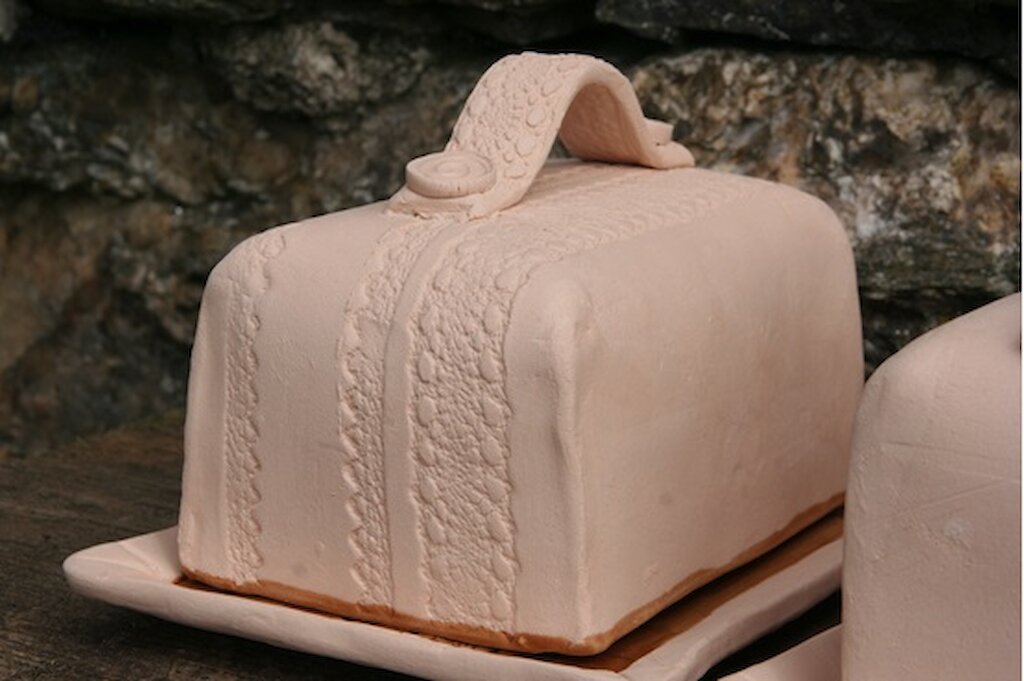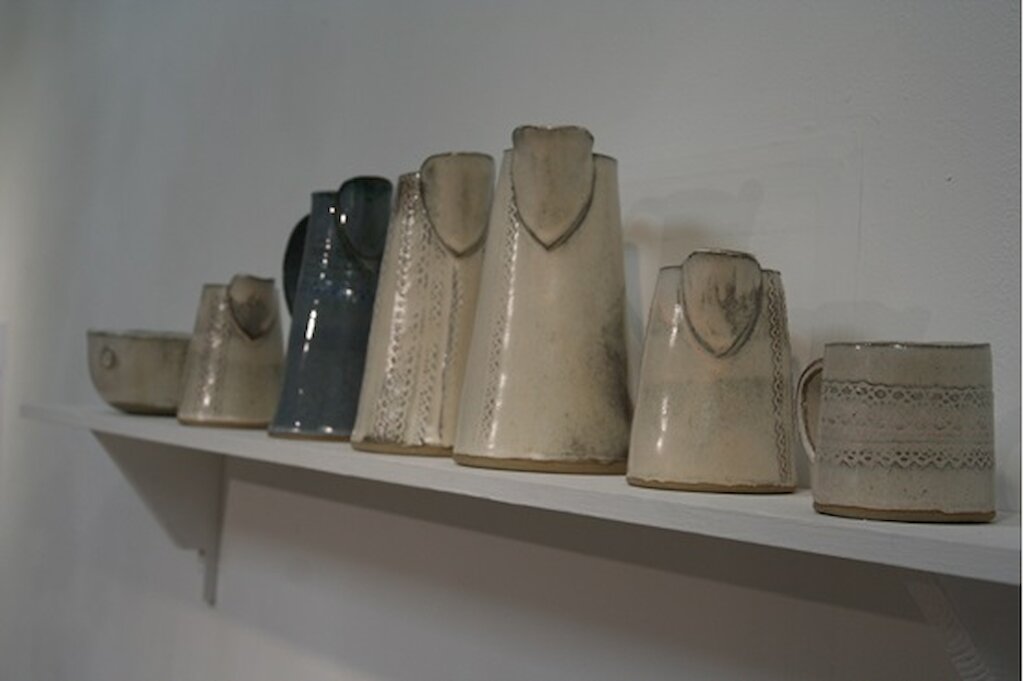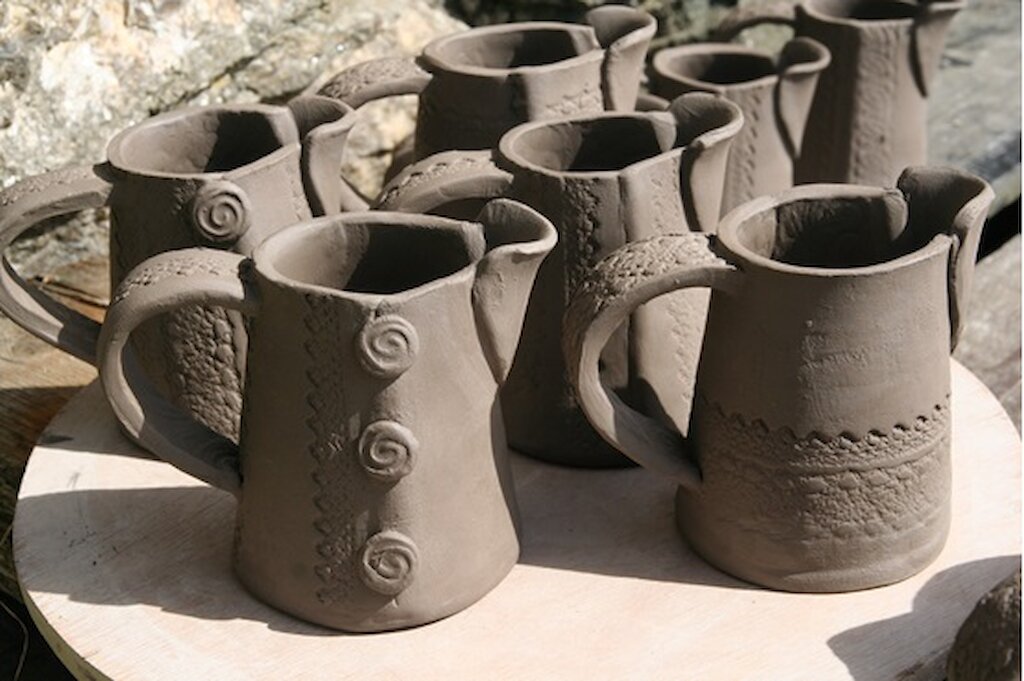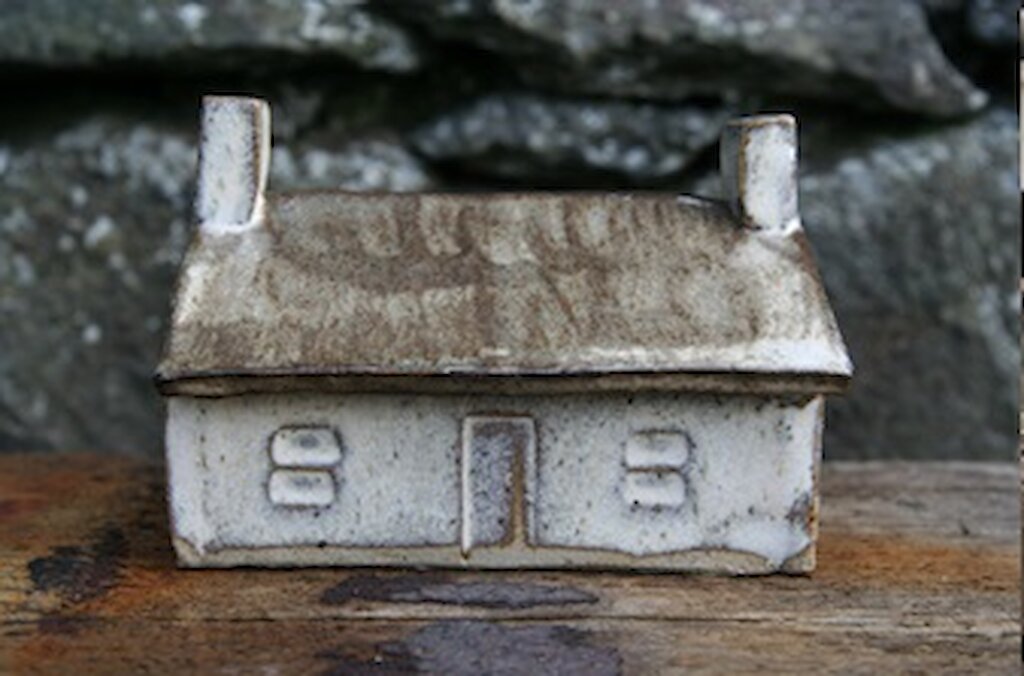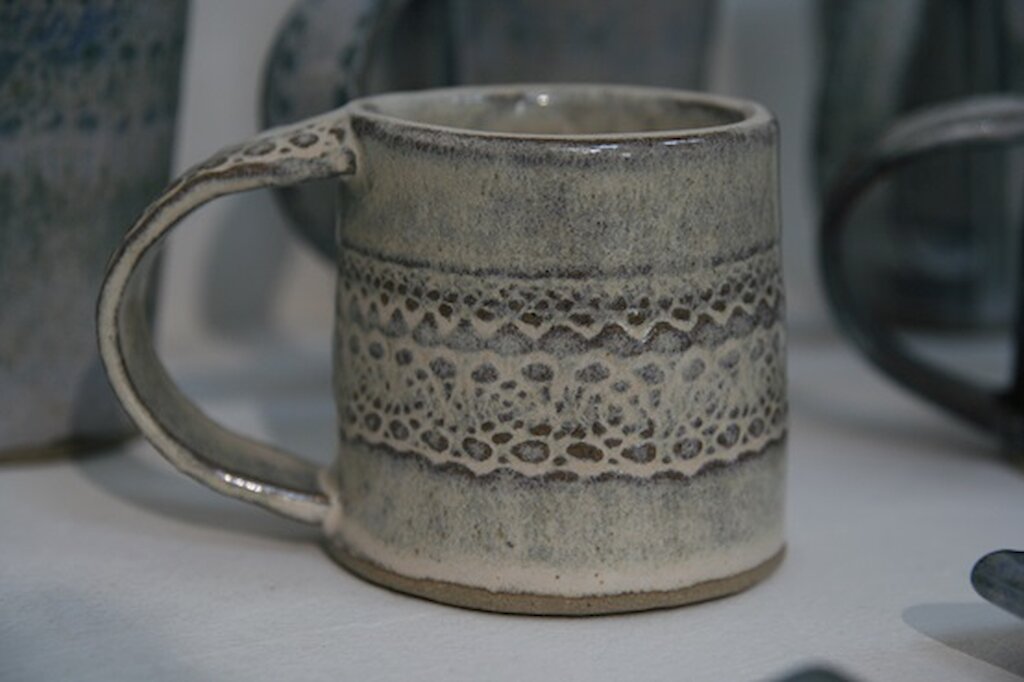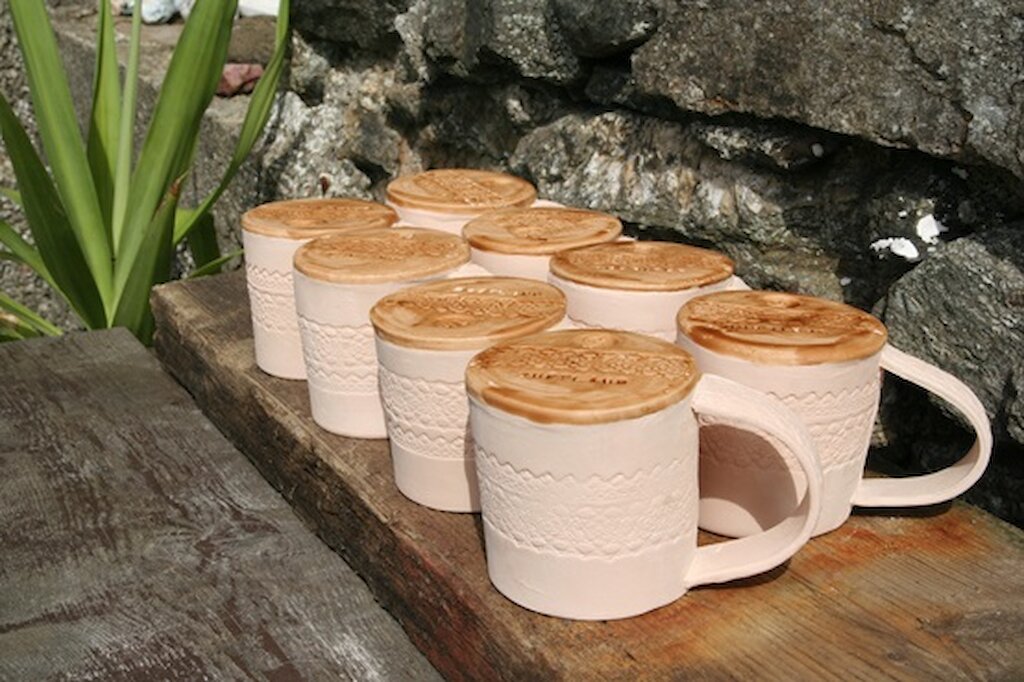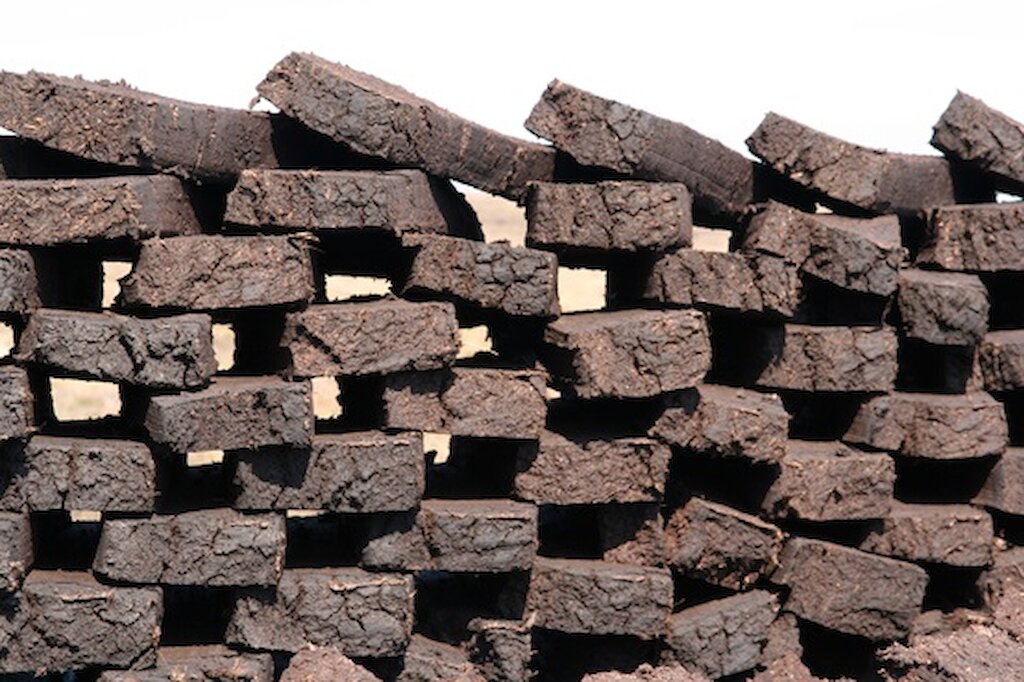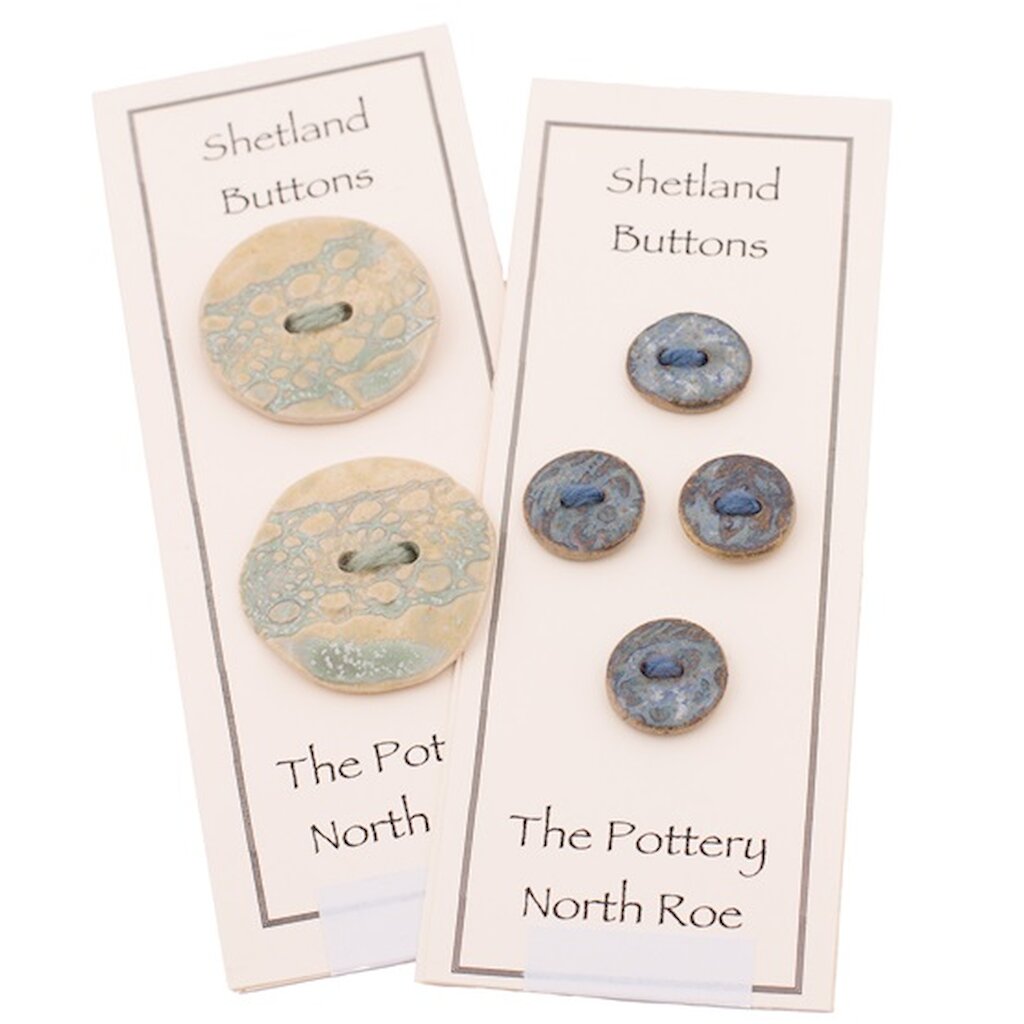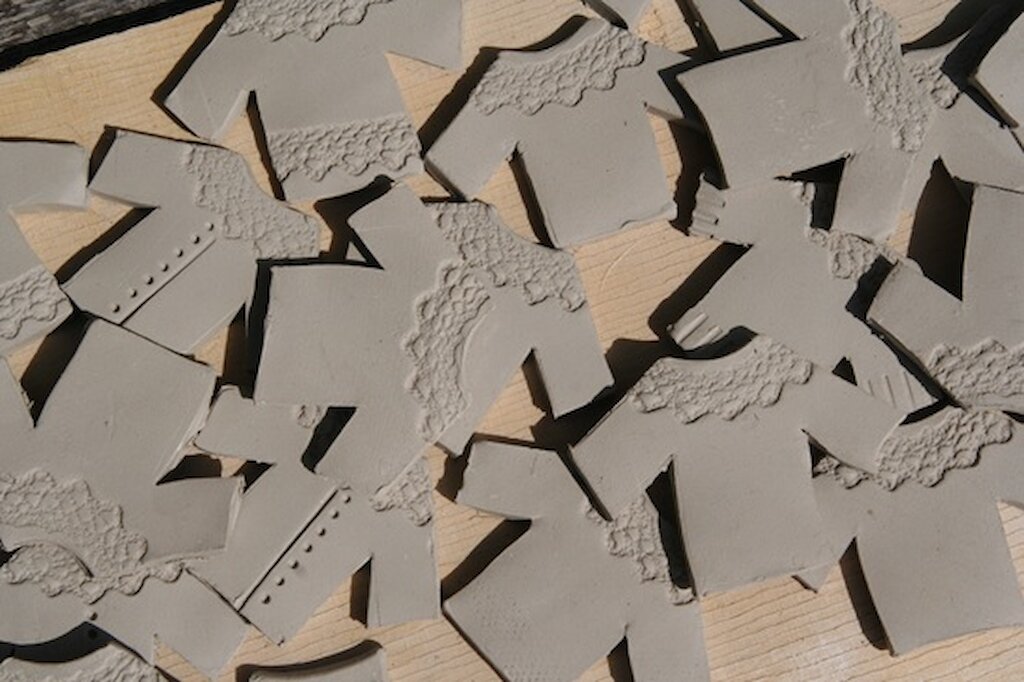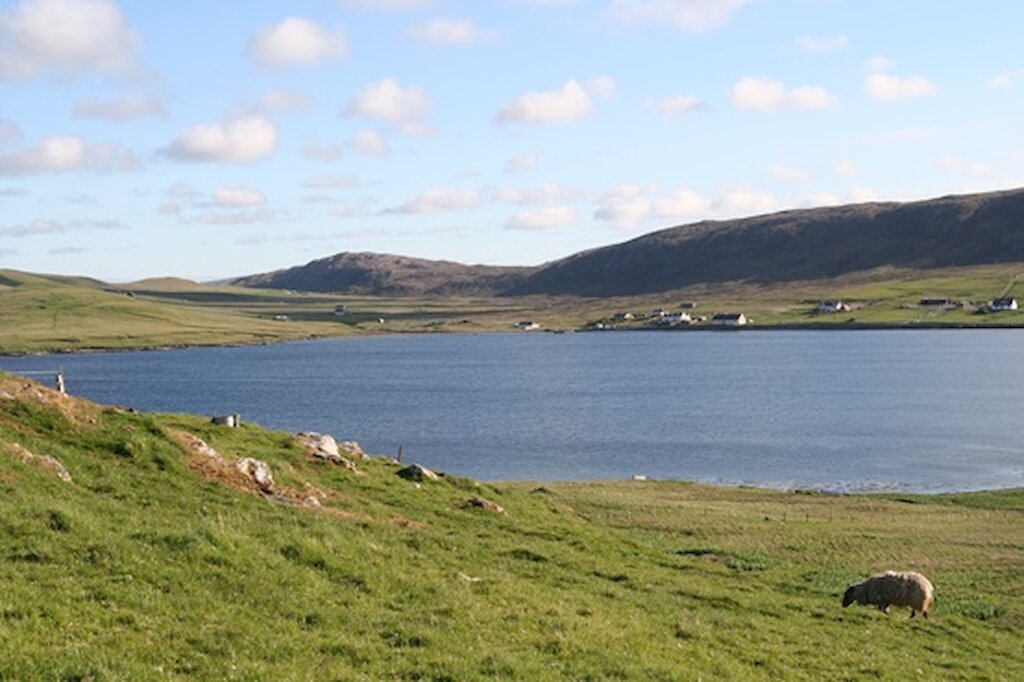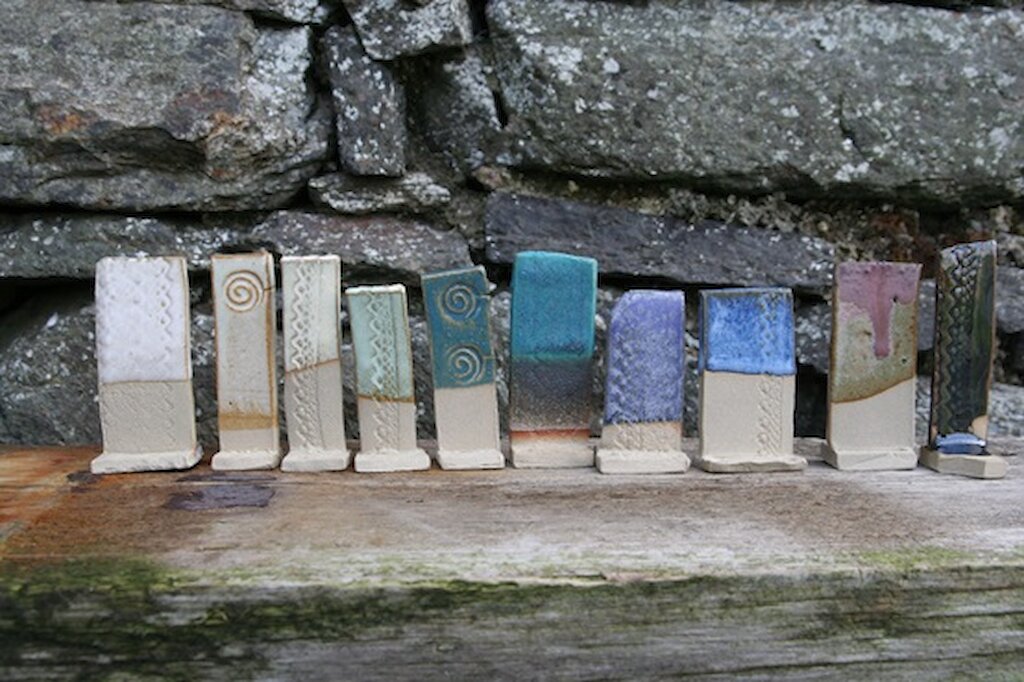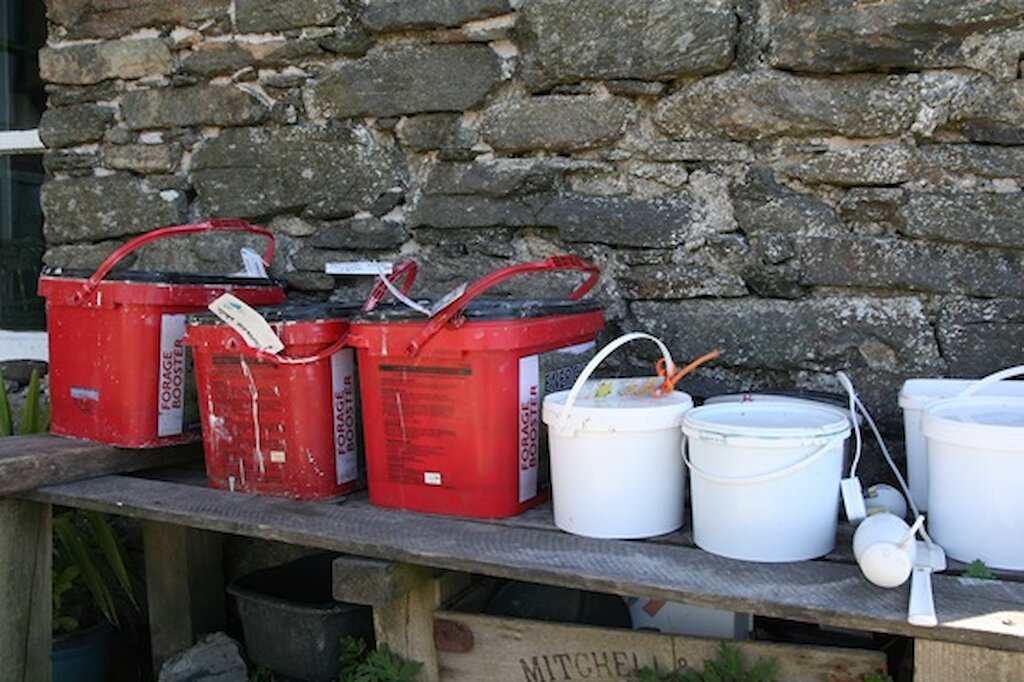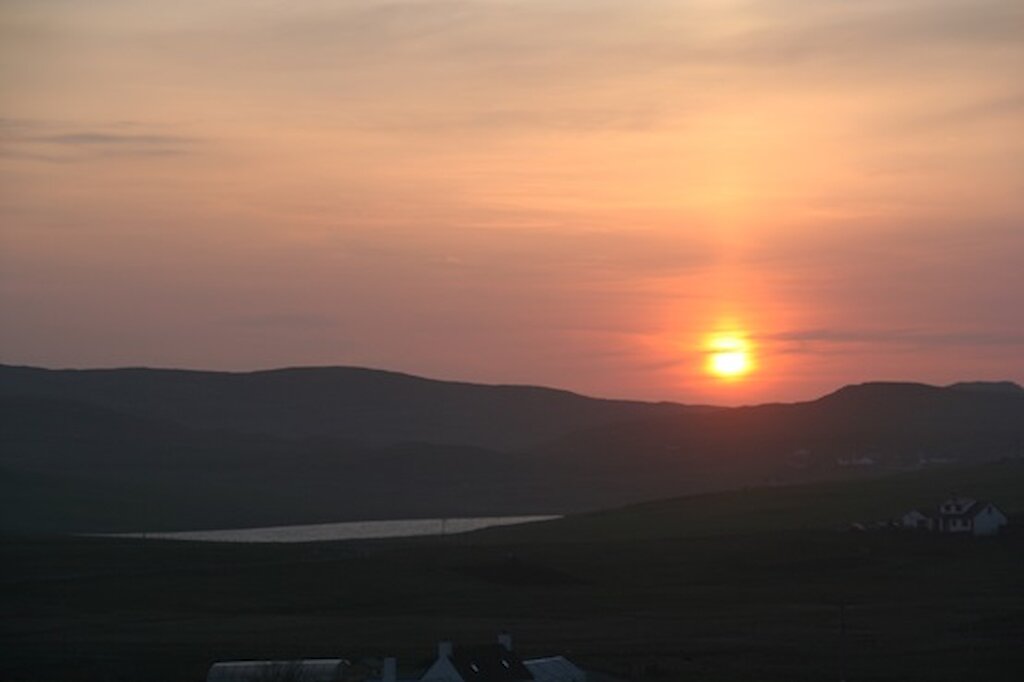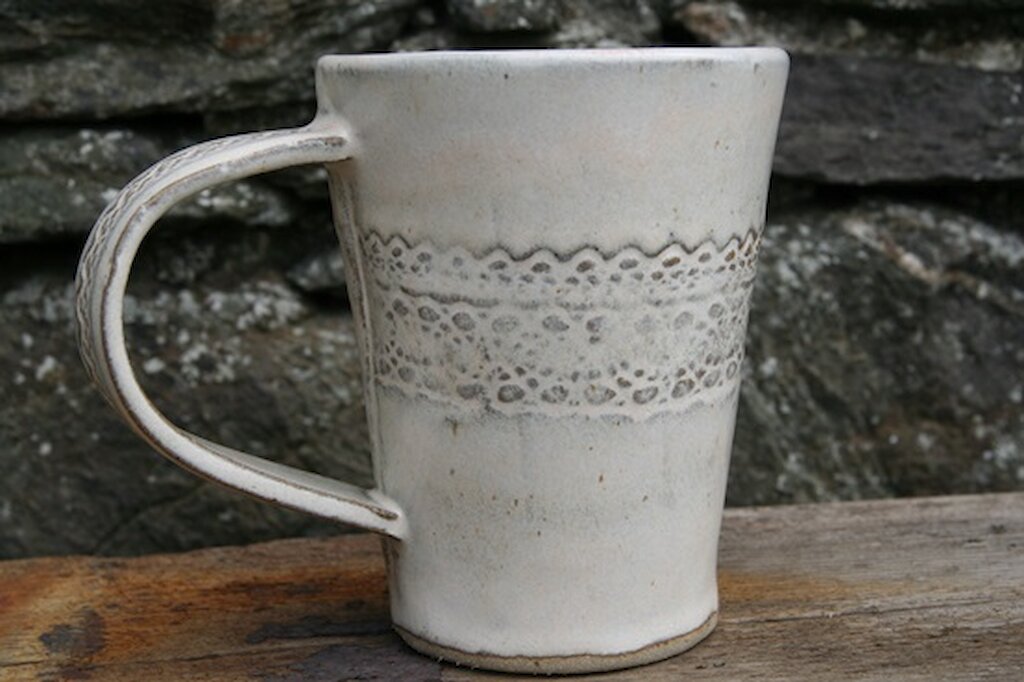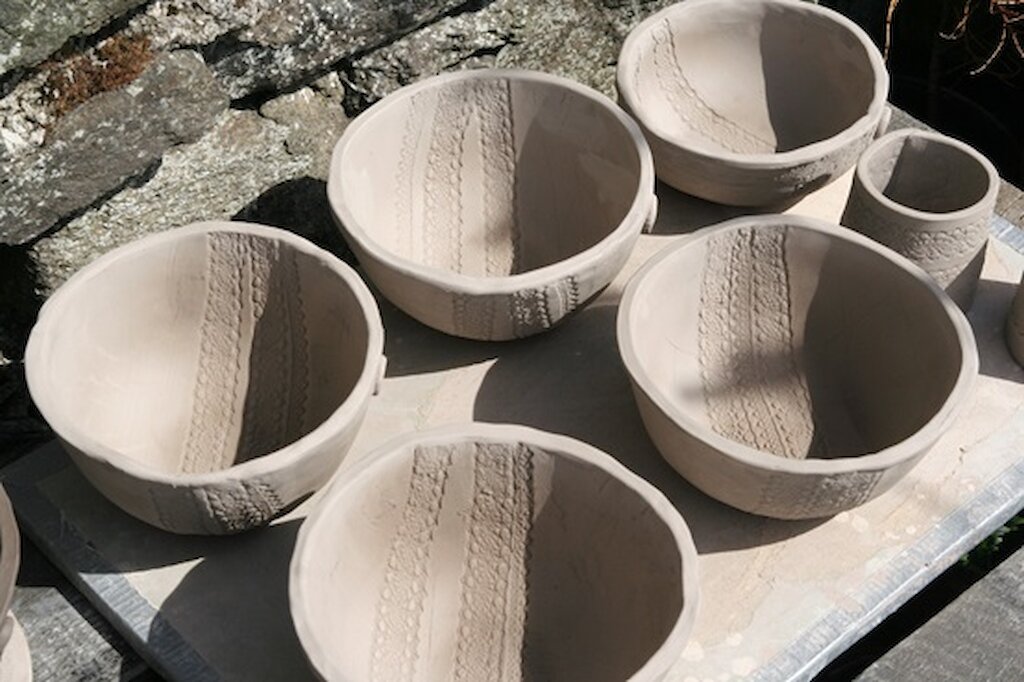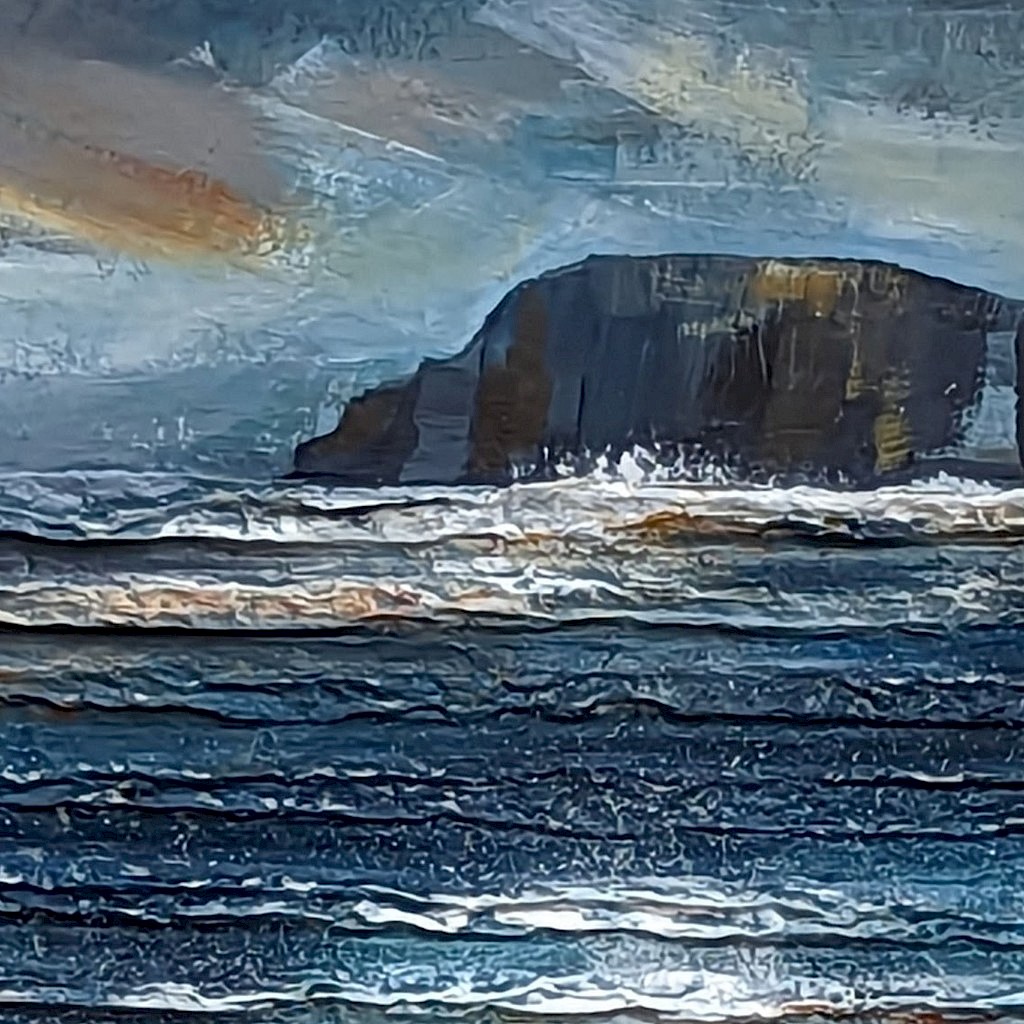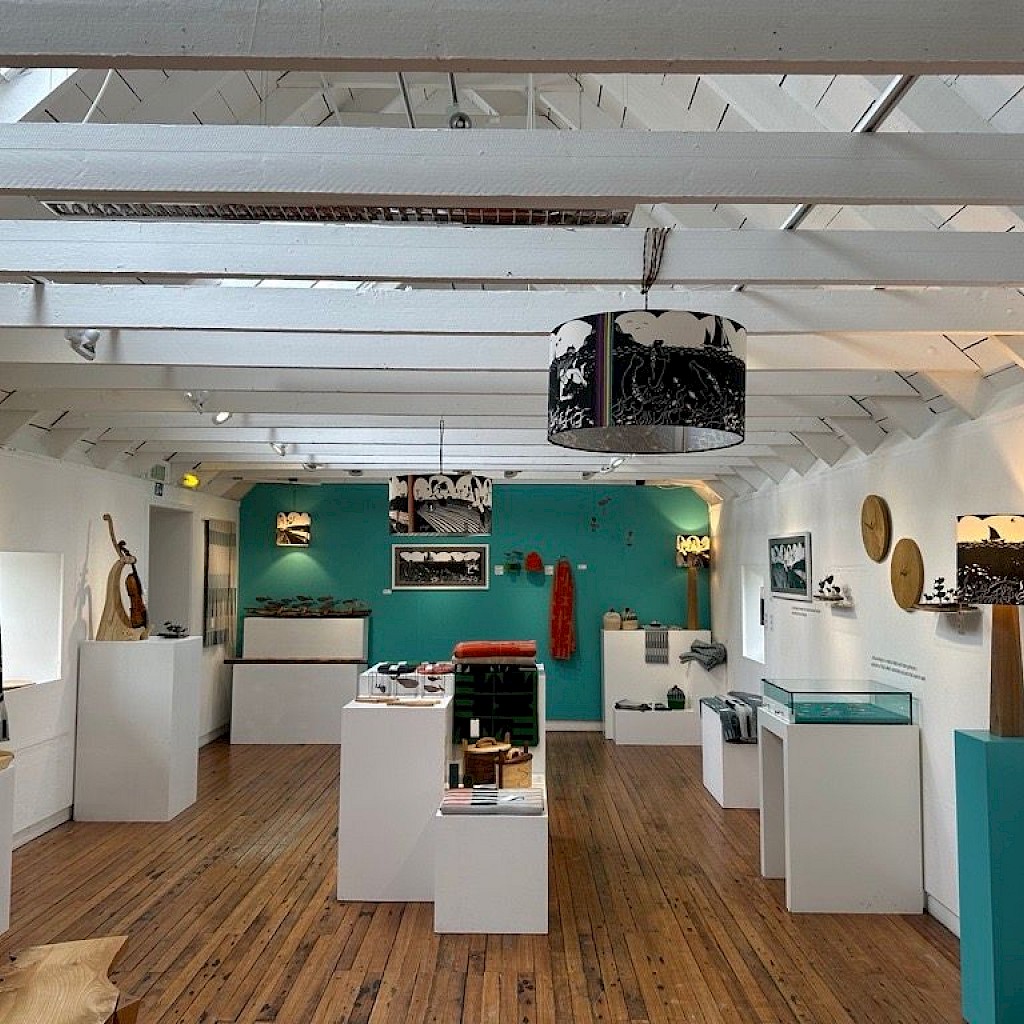Sheep
Local potter Sharon McGeady has been keeping a diary over the last six weeks of ShetlandMade, reflecting on themes of the crofting life that inspires her beautifully detailed pottery.
Sharon's work can be seen in ShetlandMade at Bonhoga Gallery until Sunday 15 July.
The day dawns and I watch our ewes wander down from the hill towards the lower parks. They walk in the paths or sheep gaets used by their mothers and grandmothers before them, surefooted and purposeful. About them dance their lambs, sturdy and light of foot, racing round the rocks and nudging their pals.
Today I am making butter dishes. The clay is rolled out using a slab roller, placed on boards and set out in the sun for a while to firm up slightly. I usually make 6 at a time. The cardboard templates are set on the clay and then carefully cut round so that the shapes are uniform to begin with. The beauty of working in clay is that during the making process the work finds its own shape, and becomes more organic in form.
After this first firing the clay is firm to hold. The bottoms are waxed and the dish is glazed and allowed to dry, and they are ready for the next firing to 1240 degrees c. The pots are then robust and strong, ready for use in the kitchen.
The sheep move on, seeking out their favourite spots where the sweetest grass grows.
Shelter
I often wonder who built the croft house I live in. The stones sit nestled together, solid and resilient against the worst of the gales and rain. These men and women had great knowledge and skills in working with local materials at a time when there was minimum technology and maximum strength of spirit. They are certainly in my heart and mind when I work away in my shed next door.
Every farmhouse across the land has a jug on the kitchen table and I have a great joy of making them. The large jugs hold about a pint, and I also make a milk jug, which is smaller. Today I have been making peerie mootie cream jugs.
The template for the cream jug came originally from a coffee cup I was given on the plane. Once the coffee was finished the paper cup was dissected, turned upside down and a lip fashioned out of my boarding card! Once on dry land the opportunity came to try out the new idea. They are all ready to be fired now.
Time to go into the house for a cup of tea.
Warmth
This year we have had the most wonderful weather and unbelievably the peats are already home and in the shed. I cast peats using a tushker, a beautiful tool that is probably about 100 years old. The handle is worn and smooth from use but it sits comfortably in the hands. Bob uses his fathers Irish turf spade which has a different shape, so we can tell who cut each individual peat. There is nothing better than coming in from a morning working with sheep to a roaring peat fire and a good cup of tea.
These mugs are called Flowerpot Mugs. Some years ago I found an old flowerpot in the shed where the hens now live and it felt just the right weight and proportions to be used as a mug. I made a paper template, turned the pattern upside down, added a handle and tested it out with clay. Here are some flowerpot mugs with their bottoms waxed, drying in the sun and waiting to be glazed.
There is music in beautifully cast peat, firstly the tempo and pace of the cutting and then the rhythm and pattern in the building of the wall.
Fleece
I wonder, over the years, how many bairns have drifted off to sleep at night listening to the gentle rhythm of their mother’s spinning wheel. Maybe the rattle of a knitting machine going back and forth signified the end of the day’s chores and the beginning of the evenings work. I marvel at the beautifully knitted pieces made by tired hands in poor light and recognise that makkin was a way of life for so many folk.
Having gone to local a class to learn how to knit haps I quickly realised that my lace edging was not going to be made using soft one ply Shetland wool, but a harsh thin nylon which could be impressed into clay.
Much of my work makes reference to the traditional lace knitting traditionally made in Shetland and it features in nearly everything I make because it is so fundamental in understanding the history of our isles. The pattern is a way of honouring the lives of those who have gone before us, of remembering the remarkable, extraordinary lives of ordinary folk who lived through unforgiving times but who were strong and resilient. People who raised bairns, cared for their older folk, worked crofts, tended to animals, mended everything they could, helped their neighbours and loved their hills and moors.
These peerie jumpers are waiting to be glazed and then will become brooches.
Landscapes
On those beautiful days when the air is clear, sea and land become saturated with colour of all shades and hues. I have a wonderful view from my workshed and I try to reflect the colours I see in the glazes I make.
Glazes are made from natural materials, many of which are milled from the stones and pebbles similar to those we find around our beaches. Understanding about glaze is an on-going journey. Some folk are trying to find the best bannock recipe but I am searching to make the best glaze recipe. I try to put a test tile in every firing I do of the kiln, and here are some of the results.
Where would we be without sheep lick buckets! Each bucket is labelled several times as many wet glazes look very similar and each is referenced to a recipe. Some colours are more challenging to make than others, and some give surprises!
Seasons
The world has tilted and is beginning its path back towards the equinox. The summer tasks are in hand, and we can enjoy long evenings outside.
Nothing stands still, and I am trying to find the perfect mug shape. This shape is popular and good for coffee, but what about hot chocolate, or tea? Can the drinker wrap their hands comfortably round its contours and warn up cold fingers? Does it fit in a pocket or basket with a thermos flask? Is the handle in the correct place and is the mug balanced?
But today is also a day for making bowls. Will they be used for warming lentil soup, steamy porridge, fresh salad or juicy gooseberries? Sharing meals with friends and neighbours is a time honoured way of keeping communities together and hospitality to others is highly valued.
It has been a busy week. Maybe now is the time to relax, take off the boots, lace up the shoes, enjoy some fiddle and accordion music and go dancing!
Related Posts
